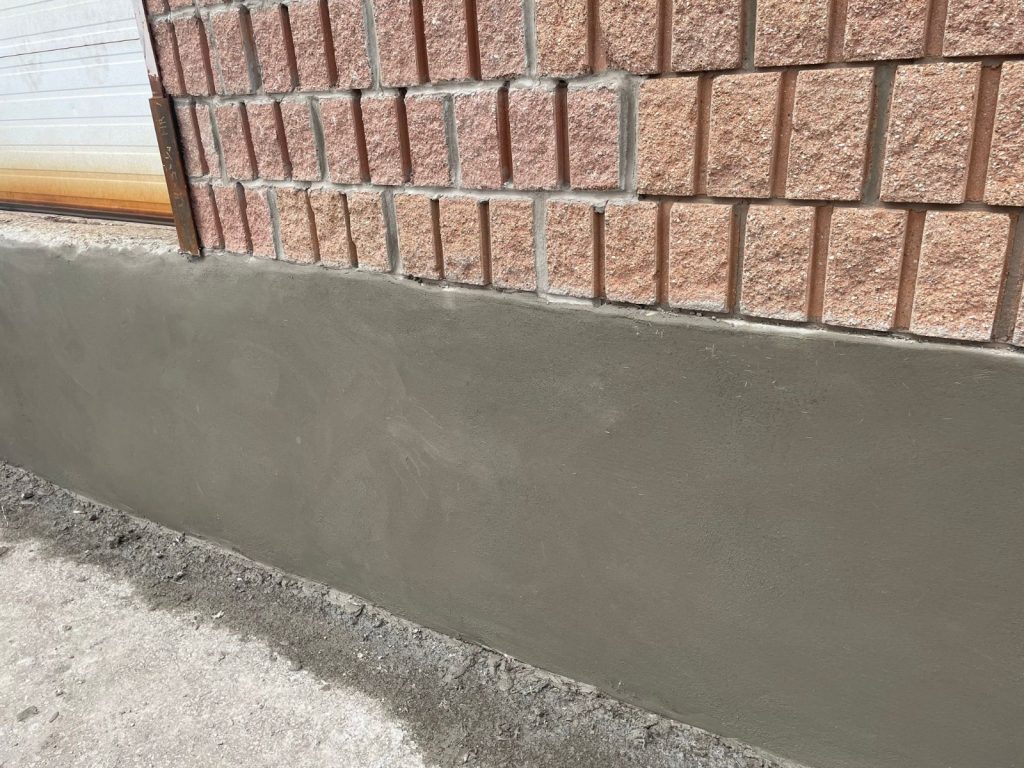Parging and Cement: What you need to know
In the realm of construction and home maintenance, terms like parging and cement often surface, but do we truly understand the nuances between the two? In this enlightening blog post, we’ll unravel the differences between parging and cement, explore the functions of cement parging, delve into its waterproofing capabilities, assess the wisdom of investing in parging, and understand the limits of its application thickness. Let’s embark on a journey of discovery to demystify these concepts and equip you with valuable insights for your home improvement endeavors.
Parging vs. Cement: Unpacking the Distinctions
Parging: Enhancing Aesthetic and Functionality
Parging is a specialized technique involving the application of a thin layer of mortar or cement-based material onto the exterior surfaces of a building’s foundation. This coating serves multiple purposes, including improving the appearance of the foundation and providing protection against the elements. Parging offers both aesthetic enhancement and functional benefits, making it an essential component of home maintenance.
Cement: The Building Block of Parging
Cement is a binding agent used in various construction applications, including parging. It’s a fine powder that, when mixed with water, forms a paste that hardens over time. This paste binds together aggregates like sand and gravel, creating the foundation for concrete or mortar. Cement is the core ingredient in parging mixes, providing the adhesive strength necessary for the material to adhere to surfaces.
Cement Parging: Its Purpose and Functionality
Cement parging, as mentioned, involves applying a cement-based mixture to surfaces like foundation walls. Beyond its aesthetic role in smoothing and beautifying exteriors, cement parging serves as a protective layer. It shields the foundation from weather elements, UV radiation, and minor impacts. This protective quality extends the lifespan of the foundation, reinforcing its structural integrity.

Waterproofing Capabilities of Parging Cement
While cement parging offers some level of water resistance, it’s essential to understand that it isn’t completely waterproof. Parging can provide a degree of protection against moisture infiltration, particularly when properly applied and maintained. However, for areas prone to heavy water exposure, additional waterproofing measures may be necessary to ensure optimal protection against water damage.
Waterproofing Capabilities of Parging Cement: Navigating Moisture Defense
In the world of construction and home maintenance, waterproofing is a critical consideration, particularly when it comes to foundational elements. Parging cement, with its versatile properties, plays a role in enhancing the water resistance of exterior surfaces. However, it’s important to understand the extent of its waterproofing capabilities and when additional measures might be necessary for optimal moisture defense.
The Nature of Parging Cement
Parging cement, a mixture of cement, sand, and water, is commonly used to coat and protect foundation walls. This cementitious layer provides a barrier against the elements, including rain, snow, and moisture. While parging is not inherently waterproof like some specialized coatings, it does offer a level of resistance to water infiltration.
Is Parging a Good Idea?
Indeed, investing in parging is a wise choice for homeowners seeking to enhance both the appearance and durability of their homes. By addressing minor cracks, protecting against the elements, and improving curb appeal, parging adds value to your property and safeguards your investment.
Parging Thickness: Finding the Balance
When it comes to applying parging, thickness matters. A general guideline is to maintain a thickness of around 1/8 to 1/4 inch. Applying parging too thinly may compromise its effectiveness, while overly thick layers could lead to poor adhesion and cracking. Striking the right balance ensures optimal functionality and longevity.
Conclusion
As we conclude our exploration of parging and cement, we’ve unveiled their distinctions, roles, and benefits. Parging is more than mere aesthetics—it’s a protective shield for your foundation. Cement, the essential ingredient, binds it all together. Remember, while parging offers some waterproofing, it’s vital to prioritize proper application and consider additional waterproofing measures for areas at risk of water exposure. Embrace the idea of parging—it’s a practical investment in both beauty and protection for your home. Whether you’re addressing minor flaws or safeguarding against the elements, parging is your ally in building a better home.


